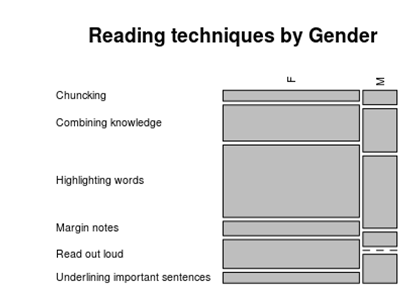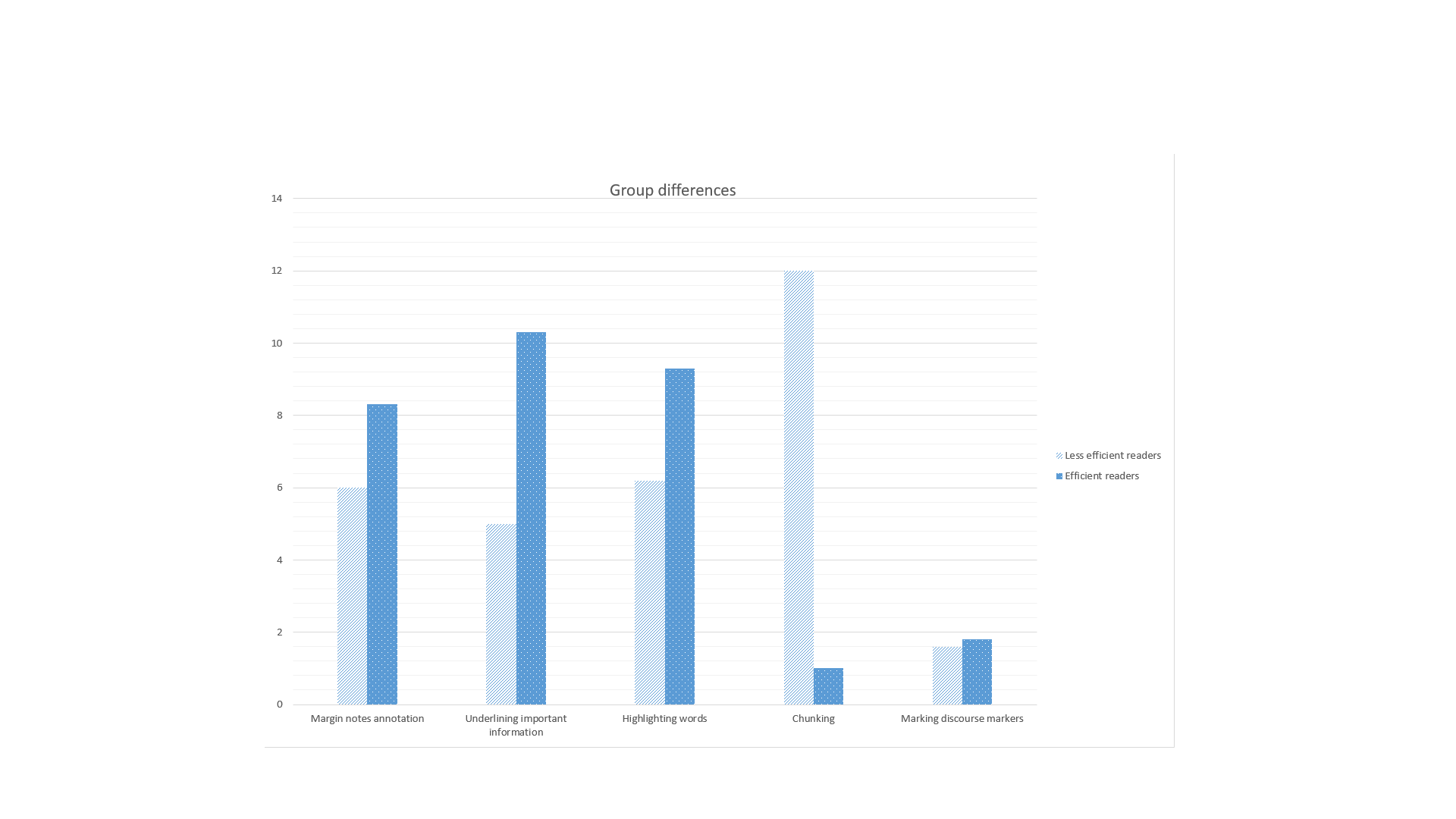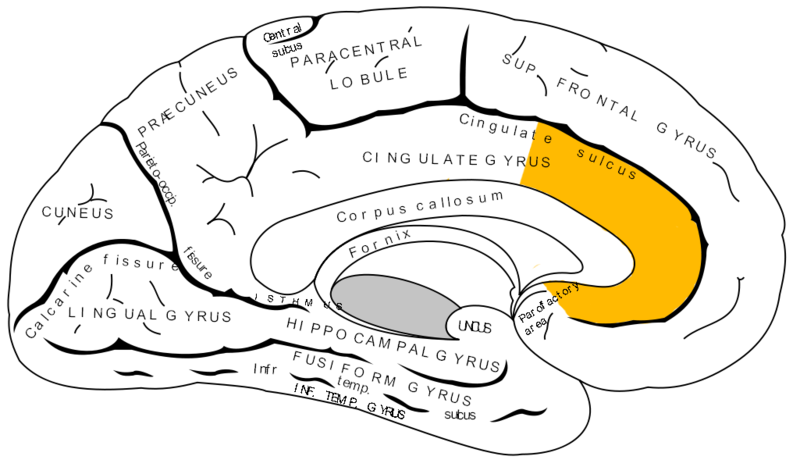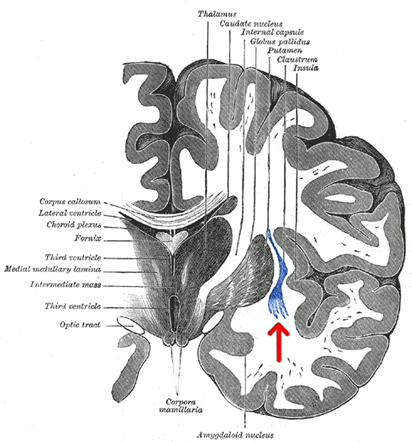Metacognition of reading
Contents
Definition of Metacognition
First of all, what is metacognition?
- To put it in a simple way it means « thinking about thinking » (Anderson, 2002)
- According to Byrd, Carter, and Waddoups (2001), it is self-awareness of mental process.
⇒ it refers to both the knowledge and the control over our own thinking and learning, an awareness and understanding of one’s own thought processes
According to some studies there are four variables in the metacognition of reading: (Brown A.L. and Baker L., 1981); (Flavell and Wellman, 1977)
The text – features of the material that has to be learned (difficulty,familiarity,interest..etc)
The task – the act of memorizing by the reader.
The strategies- which we will discuss later on.
The learner's characteristics- ability,motivation
The metacognitive strategies of learning/reading involve processes such as (Armbruster et al., 1983):
Planning: assessing knowledge before reading : What don’t I know? What do I need from this text ?
Monitoring: literal reading isn’t enough, connections have to be made in between prior knowledge and the read text: Do I understand what I just read ? We thereby determine whether that new information is relevant or not
Summarizing/Evaluating: Is what I am doing working?
Reading strategies
Reading strategies can be used to improve one's understanding of a text, in order to be more effective.
We can differentiate various reading strategies: (Pressley and Afflerbach, 1995)
- overview before reading (chuncking/pre-segmenting the reading time)
- look for important information and pay greater attention to it (highlighting words)
- relate important points to one another
- activate and use prior knowledge(combining knowledge)
- change strategies when understanding is not good (read out loud...)
- monitor understanding and take action to correct inaccuracies in comprehension.(margin notes)
Studies show that unsuccessful students lack this strategic approach to reading (Garcia et al, 1998); (Karbalaei, 2010).
It was also found that dyslexic readers (poor text comprehension and spelling abilities) frequently use metacognitive strategies as a compensation to try and understand the text better (Kirby et al, 2008).
Those reading techniques can be studied statistically: we will first consider a possible correlation in between reading techniques & gender, then in a second time we will consider the efficiency differences in between various reading techniques
Statistical approach-Gender correlation
We decided to carry out a statistical research in our second year veterinary class, in order to see what kind of metacognitive strategies were mainly used by our fellow students. The population is of 60 individuals (48 women, 12 men), all second year veterinary students. This ration of 80%/20% can be considered representative of our class
Throughout a poll, we collected data concerning the main reading techniques of each individuals →The frequency proportions of reading techniques (in each gender) are displayed in the following Mosaicplot (see Fig.1):
The mosaicplot will display the mainly used reading technique in each gender (i.e: the bigger the "grey square" on the mosaic plot, the larger the frequency (of the related reading technique)).
|
Chunking (or dividing): a sentence is put into phrases by slashes
Combining notes: making/gathering notes from different sources (books, internet, former students’ notes…)
Margin notes: annotations within the margin, arrow pointing at some specific parts of the text…
We can observe that the distributions (of frequencies here) are similar in between women and men, even though no male individual of the study chose "Read out loud" as a main reading technique.
⇒ It appears that there would be no correlation (independence) in between the chosen reading technique and the individual's gender.
We can now realise a Fisher's exact test in order to test our independence hypothesis:
A fisher exact test of independence can be applied here since our population size is quite small (only 60 individuals) Our null hypothesis here is the independence of reading technique and gender. We obtain a p-value of 0.5602.
Since p>0.05, we cannot rightfully reject this null hypothesis, nor say that the result is significant.
⇒We cannot rightfully conclude that the reading techniques are independent of the gender.
Statistical approach-Reading efficiency
We could also study the correlation in between the chosen reading techniques and the results obtained at examinations. Rather than asking our classmates what were their exam results/grades, we will here use another research (Shikano, 2016)
In this research, the qualitative study is based of 44 Japanese L2 learners at the university level. We can differentiate:
15 participants who scored 1/3 in a summary quiz: so-called "less efficient readers"
10 participants who scored 3/3 in the same quiz: so-called "efficient readers"
|
In this study, we see a net difference in reading techniques according to the efficiency of the reader.
⇒We could then suppose that highlighting words, underlining sentences and making margin notes would be more efficient than chuncking for example (see fig.2) Through this statistical approaches, one could classify reading techniques in accordance to the efficiency they can provide.
Metacognition of reading and the brain
Looking for the part of the brain responsible for metacognition is like looking for the holy grail. (i.e: Most of the brain related mechanisms remain yet to be discovered)
We don't yet know how it really works. What we know is that the Anterior Cingulate Cortex = ACC is involved in metacognition according to the studies of Jing,Niki and Philips (2004). They performed the « Aha » experience (the feeling you get when understanding the solution to a problem after spending a lot of time trying to solve it), using MRI imaging to show which parts of the brain were activated in the process. ⇒They have shown that the ACC is related to metacognition & understanding.(The ACC is located in the medial frontal lobe, in front of the corpus callosum: yellow area in fig.3)
|
It is also clear that the frontal lobes -especially in the prefrontal cortex- are essential in metacognition. (Pannu and Kaszniak, 2005). The prefrontal cortex is the area managing complex processes like reason or logic.
It has been shown that patients with frontal lobe damage have an impaired metacognition. (Shimamura and Squire, 1986); (Shimamura, 2000).
Neuroimaging studies showed that prefrontal cortex is active during judgments of learning, feeling of knowing and tip of the tongue states. It was also shown that some drugs impair metacognition, like benzodiazepines, inducing a mild amnesia.(Bacon E. and Schwartz B.L., 2008)
There is a region in the brain that stays a mystery for scientists but has shown some connection to the human consciousnes: The Claustrum (see Fig.4) is a thin sheet of grey matter highly connected to the rest of the brain. Its name means « hidden away » (Crick and Koch, 2005) because it is hidden in the inner surface of the neocortex in the center of the brain. (Claustrum is in blue on Fig.4)
|
Extensive neuron projections have been discovered between the claustrum and the cortex, making it possible to achieve many higher cognitive functions, like problem solving or creativity. (Buchanan and Johnson (2011); Crick and Koch (2005); Minciacchi et al. (1995); Tanne-Gariepy et al. (2002); Wilhite et al. (1986); Schwartz et al. (2008))
The claustrum also has connections to subcortical structures (Thalamus, Basal ganglia, Brasinstem...) Arikuni and Kubota (1985); Berke (1960); Buchanan and Johnson (2011); Crick and Koch (2005); Salerno et al. (1990); Tanne-Gariepy et al. (2002).
⇒ The claustrum would be involved in receiving, assimilating, integrating, and channeling information throughout the brain (Edelstein and Denaro, 2004); (Remedios et al, 2014); (Torgerson et al., 2015)
Ways to induce awareness of metacognitive learning
We could improve the metacognitive learning skills of individuals within a population by:
Introducing -at an early stage of life at school- personality tests to determine what type of learner each individual is
How professionals (psychologists; counsellors) guide students with adapted methods according to their own learning capabilities (visual, auditive, etc) and how culture of different countries can affect this. (Volet et al, 1991)
Detect at an early stage whether a child is dyslexic/ autistic/ suffers from Attention Deficit Hyperactivity Disorder (ADHD) or any Learning Disability (LD) for instance to help facilitate the knowledge of which type of learning is appropriate to such individuals.(Harris et al, 2004)
Incorporating stress management workshops in school to smoothen learning.
A number of self-regulation processes or strategies can be effectively taught to students with deficiencies or difficulties in self-regulation to aid in their development of these capabilities. Children with LDs and ADHD often exhibit problem behavior in the classroom. This may take the form of inappropriate verbalizations, impulsive or inappropriate behaviors, or excessive motor activity. Hence determining the problem at an early stage can help in self-regulation among students and their teachers (Harris et al, 2004)
It would also appear that groups and communities can affect Metacognition:
For example, in communities and countries where people are more conventional and adopt more traditional ways of learning, they are not so open in trying to find out new strategies of learning for a child.
⇒So we believe that in such cases the individual best learning strategy of the child might be neglected. Hence efficiency is decreased.
Conclusion
Metacognition of learning goes beyond the idea of simply adjusting the mind to a specific way of learning. It requires an awareness of higher order thinking, which enables understanding, analysis and control of one's cognitive processes. By acknowledging the involved processes, one can enhance its foccusing ability along with its efficiency. However, the efficiency of the different reading strategies depends on the type of learner the person is: some people are more visual, or auditive etc... So we each have to find appropriated(/better-fitting) ways of studying.The metacognition of reading will concern the visual areas of the brain (reading activity itself), as well as the prefrontal (reason and logic) and anterior cingulate cortex (where the important informations of the text are being treated and dealt with) and also the Claustrum (problem solving & creativity).Metacognition of learning also demands a deep understanding of the geographical location/culture of the concerned people. Performing early personal tests can help determine what type of learner a person is.
References
Afflerbach and Pressley, 1995 - Verbal protocols of reading
Amato G., Cortimiglia R., Crescimanno G. and Salerno M.T., 1990 - The role of the claustrum in the bilateral control of frontal oculomotor neurons in the cat
Anderson N.J., 2002 - The role of metacognition in second language teaching and learning
Arikuni T., Kubota K., 1985 - Claustral and amygdaloidal afferents to the head of the caudate nucleus in macaque monkeys
Armbruster B.B., Echols C.H. & Brown A.L. - University of Illinois at Urbana-Champaign, 1983 - The role of metacognition in reading to learn: a developmental perspective
Berke J.J., 1960 - The claustrum, the external capsule and the extreme capsule of Macaca mulatta
Boussaoud D., Rouiller E.M. and Tanné-Gariépy J., 2002 - Projections of the claustrum to the primary motor, premotor, and prefrontal cortices in the macaque monkey
Brown A.L. and Baker L., 1981 - Metacognitive skills and reading
Brunswick N.(2015) - Metacognition and reading: Comparing three forms of metacognition in normally developing readers and readers with dyslexia Dyslexia 21(3): 273-284
Buchanan K.J. and Johnson J.I., 2011 - Diversity of spatial relationships of the claustrum and insula in branches of the mammalian radiation
Byrd E.H., Carter E.C. and Waddoups S.D., 2000 - Taking control of your college reading and learning. Wadsworth Publishing Company
Denaro F.J. and Edelstein L.R., 2004 - The claustrum: a historical review of its anatomy, physiology, cytochemistry and functional significance
Flavell and Wellman, 1977 - Perspectives on the development of memory and cognition
Garcia G.E., Jimenez R.T. and Pearson P.D., 1998 – Metacognition, Childhood Bilingualism and Reading from Metacognition in Educational Theory and Practice by Hacker D.J., Dunlosky J. and Graesser A.C, pp.193-219
Granato A., Antonini A., Dr. Minciacchi D., Giancarlo Tassinari G., Macchi G., Zanolli L., Santarelli M., 1995 - Mapping subcortical extrarelay afferents onto primary somatosensory and visual areas in cats
Harris K. R., Reid R.R., Graham S. (2004) - Self-regulation among students with LD and ADHD
Hendricks C., Teyler T.J. and Wilhite B.L., 1986 - Functional relations of the rodent claustral-entorhinal-hippocampal system
Karbalaei A. - Mysore University (2010) - A comparison of the metacognitive reading strategies used by EFL and ESL readers
Kaszniak A.W. and Pannu J.K., 2005 - Metamemory experiments in neurological populations: a review.
Kayser C., Logothetis N.K. and Remedios R., 2014 - A role of the claustrum in auditory scene analysis by reflecting sensory change
Kirby J.R. and Savage R.S., 2008 – Can the simple view deal with the complexities of reading? Literacy, 42(2), 75-82.
Koch C. and Crick F.C., 2005 - What is the function of the claustrum?
Luo J., Niki K. and Phillips S., 2004 - The function of the anterior cingulate cortex (ACC) in the insightful solving of puzzles: The ACC is activated less when the structure of the puzzle is known. Journal of Psychology in Chinese Societies, 5(2), 195-213.
Schwartz B.L and Bacon E., 2008 - Metacognitive neuroscience from Handbook of metamemory and memory, edited by Dunlosky J. and Robert A. Bjork, 355-371
Shikano M., 2016 - Metacognition in Reading. What are you thinking about what you are reading?
Shimamura A.P. and Squire L.R., 1986 - Memory and metamemory: a study of the feeling-of-knowing phenomenon in amnesic patients. Journal of Experimental Psychology: Learning, Memory, and Cognition, 12(3), 452.
Shimamura A.P., 2000 - Toward a Cognitive Neuroscience of metacognition
Torgerson C.M., Irimia A., Goh S. and Van Horn J.D., 2015 - The DTI connectivity of the human claustrum
Volet et al., 1991 - Modelling and coaching of relevant metacognitive strategies for enhancing university students' learning: 319-336
Wang M.C., Haertel G.D., Walberg H.J., 1990 - What influences learning? A content of analysis of review literature_Journal of Educational Researc, 84, 30-43




